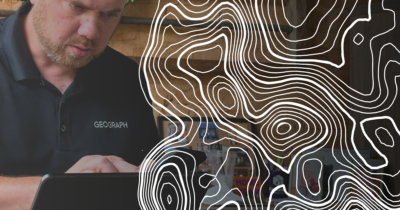Digital twins powered by GIS technology are digital copies of what we see in the real world. A common example is navigation systems you use on your car or phone. You see a digitized map of your surroundings with landmarks and way-finding notations to get you where you want to go.
If you work in an industry like telecommunications, you are likely responsible for managing thousands of network assets. You can do this the old way, with CAD drawings, or spreadsheets, or you can do it the new way, with a digital twin.
Let’s explore how a digital twin can harness the power of GIS to improve asset management, enhance operational efficiency, and advance resource management processes. Your network map can help better understand the systems and processes connected to one another, respond more quickly to customer issues, and plan for future expansion.
Improve Asset Management
Your fiber map becomes your single source of truth with complete end-to-end visibility and helps streamline network management processes. Gone are the days when your plant records reside in numerous data sources, costing you extra time and expense to track down needed information. With a digital twin, all your data is in one place and ready when you want it.
You can personalize your map data and include crucial details associated with plant equipment such as equipment type, location, installation date, manufacturer, model, and maintenance history. All this data is at your fingertips so you can streamline your management efforts relative to planned or preventative maintenance.
Fiber mapping with a digital twin can also include information about cable routes, splice points, access points, and connections. This insight allows you to predict network capacity requirements and to optimize your network’s performance to ensure network reliability and customer satisfaction.
Enhanced Operational Efficiency
Having a single source of truth helps improve network operational efficiency by troubleshooting network outages, understanding cable capacity and usage, and planning for new installs and expansions. You can also enhance your outage response capabilities to be more agile in times of trouble and be more intentional with your resources. For example, plugging OTDR readings into a network management system allows you to quickly and easily determine the location of the outage, understand which customers are affected, and determine if any other plant assets may exist at the fault location.
A digital twin can also help you better understand your network’s fiber layout, light status, and active fiber zones. A thorough understanding of your fiber network capacity will highlight where cable exists and what capacity is available before you plan future expansions and upgrades or when accommodating new customers or services.

Digital twins are also useful when preparing to design new builds as there is much critical information to consider to adequately and accurately plan and design — whether in a feasibility, planning, or high-level design phase.
It is a game-changer to have all cable and port capacity information in one place, the ability to ingest additional data sources – like census blocks and FCC broadband data – and an “automatic” method to produce cost estimates, construction packets, and vendor comparisons within your GIS-based fiber map.
All of the above leads to enhanced operational efficiency and provides the opportunity for a competitive advantage. Operational efficiency is also crucial for network reliability, customer satisfaction, and compliance. It ensures you effectively utilize fiber network resources while enabling better decision-making and scalability.

Effective Resource Management
When you manage a fiber network, it is essential to allocate resources effectively so you can quickly and easily share complex information across departments within your organization and also with others outside your organization when needed. Everyone can have visibility to the same accurate data for more streamlined workflows and decreased resource redundancies to ultimately save time and expense for you and your organization.
A digital twin as your single source of truth allows everyone in your organization to collaborate. Departments such as GIS Mapping, Operations, IT, and Engineering, even up to the C Suite, can benefit from having access to the data inside your fiber map. A decision-critical map of your network offers visibility into your network and provides better data dashboards to equip your team with insights needed to increase your organization’s return on investment.
Create a Digital Twin of Your Network with GEOGRAPH
We’ve highlighted the capabilities of digital twins to improve asset management workflows, enhance operational efficiency, and more effectively manage resources. These benefits are achievable with the right tools in place, and CrescentLink can be an essential solution in your toolbox.
At GEOGRAPH we pride ourselves on partnering with our customers to help create customized digital twins using our CrescentLink software. Give us a call to learn more. Our CrescentLink solution is available as an extension for the Esri ArcGIS ecosystem. It is currently available on ArcMap and will be available on ArcGIS Pro starting in December. We would be happy to review details or schedule a demo.



